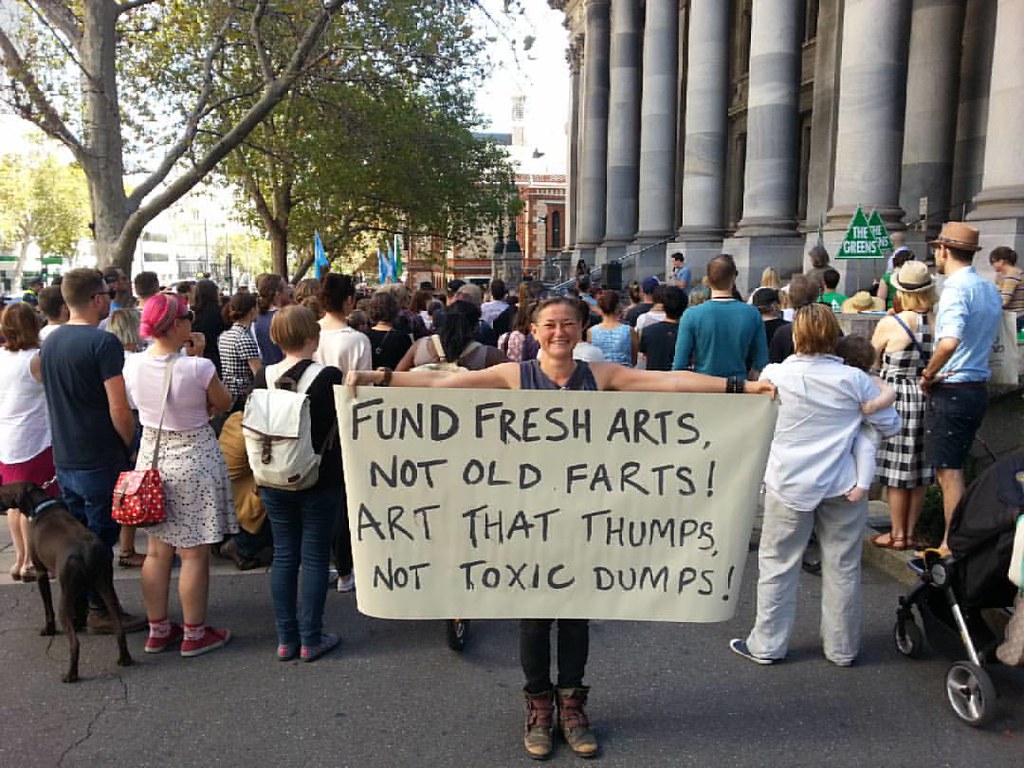
Letter from the Editor
Arts Excellence: The Cause of and Solution to Contemporary Art’s Problems
by DANNY OLDA, May 11, 2018
A future history will tell us whether this is a moment, age or epoch, but as each literal climate is marked by characteristic weather, this current climate of populism is marked by turbulent anti-intellectualism.
Anti-intellectualism, in turn, is frequently marked by a practice in which the serious consideration of ideas for their own sake is characterized as a trivial exercise of an entitled class, critical thinking as the onset to subversion, and “intellectuals” as a homogeneous group spurred on by malintent. While anti-intellectualism is not necessarily shocking, the extent of its current surge is. The shift into the mainstream of ideas such as Birtherism, crisis actors, false flag conspiracy theories and the existence of a “deep state,” signals the displacement of well-established realities and repositions them as marginal. As contemporary art and its discourse have found what is perhaps its most friendly hearth in the collective halls of grad schools around the United States, this particularly virulent surge of anti-intellectualism is especially troubling.
In part, this is troubling simply because anti-intellectualism is existentially opposed to intellectual activity. However, the dichotomy between anti-intellectualism and the discourse of contemporary art is rooted deeper and more diffusely than that.
I’m confident that I echo the conviction of many in the field by saying that art doesn’t provide answers as much as it asks questions. That isn’t to say that art is by nature curious (though it often is) or isn’t enlightening (which it can be). Rather, works and practices often ask questions as a means of dismantling assumptions and provoking unexpected avenues of thought. These are questions in the Socratic sense: that is, not questions that accumulate novel answers, but questions that jostle the few we thought we had secured. Socrates’ fate may or may not be prescient for the state of contemporary art, but even a democracy’s low tolerance for confidence-jostling will likely be telling and increasingly familiar.
Additionally, art and the ideas behind it unfold as a dialectic, a series of arguments and counter-arguments over centuries and peoples. Progress is often made by nuanced additions and revisions of thought. However, it is also often the case that progress is made by way of conceptual razing and rebuilding. It’s in art’s nature to upend and overturn ideas, beliefs and ways of seeing. On that account, I wouldn’t quite say that the ground state of contemporary art is in the form of a social antagonist, but I wouldn’t stop far short of it either.
Finally, there is contemporary art’s persistent popular characterization: a frivolous and, at times, ridiculous enterprise of creation, coupled with a market of art-as-dubious-commodities bought and sold by an equally dubious international leisure-class. It is an old saw but does little to contradict contemporary art’s depiction as a product by and for the elite – the perennial arch-enemy of populism.
If artwork-as-appeasement becomes the norm for contemporary art and its discourse…the overall rigor of contemporary art is dampened, it’s power and benefit diluted, the whole point of art is dulled. Everybody—literally everybody—deserves better than that.
The reasons outlined in the previous three paragraphs (undoubtedly accompanied by other reasons) positions art as a frequent and current target of populism and anti-intellectualism. However, I should be clear: I’m not warning of some existential threat to art or the demise of contemporary art as we know it at the hand of anti-intellectualism. I just don’t think that is a serious concern now and doubt it will be anytime soon.
Rather, the real danger is much more boring, and insidious for it.
Arguably, art has a knack for financially depending on the selfsame institutions that it often most heartily criticizes, i.e. today, the wealthy collector class, large arts institutions and especially government. While arts and its funding can flourish under the stewardship of a tolerant democracy, it can whither along with minority rights under the rule of a populist democracy. Unfortunately, one of the most common strategies of artists and arts institutions to mitigate funding cuts (or to better secure increasingly scant funding) is to mollify funders and their tastes through self-censorship and wary programming.
This, of course, results in art that is the product of a compromised vision. However, there is more at stake. If artwork-as-appeasement becomes the norm for contemporary art and its discourse (i.e. a culture of appeasement), the overall rigor of contemporary art is dampened, it’s power and benefit diluted, the whole point of art is dulled. Everybody—literally everybody—deserves better than that.
Finally, this brings us to our current predicament: How do we maintain arts excellence in an age of populism?
What can we do when what is best about art is also what intensifies some of the most vitriolic ire against it? How do we proceed when it may seem there is a choice between keeping our integrity and keeping our funding? How do those of us working in the arts navigate being accessible to all audiences while avoiding falling into the trap of populism ourselves?
I’m sorry to say that 800 words into this article I don’t have an easy answer. I don’t even have a challenging one. But perhaps this issue of the Creative Pinellas Magazine offers a glimpse of a successful way forward and a hope of exciting art, ideas and initiatives to come.
Our guest editor Margaret Miller, as the Director of the Institute for Research in Art at the University of South Florida, is very well positioned to lead the investigation of this topic. Over the course of the issue, and with her guidance, we take a look at people in our community that are working hard at maintaining arts excellence even as this may become increasingly challenging, and we explore projects that are working from around the world to our own neighborhoods and how they can be built upon.
– Danny Olda,
Editor, Creative Pinellas Magazine




